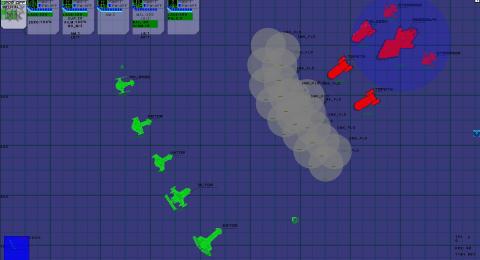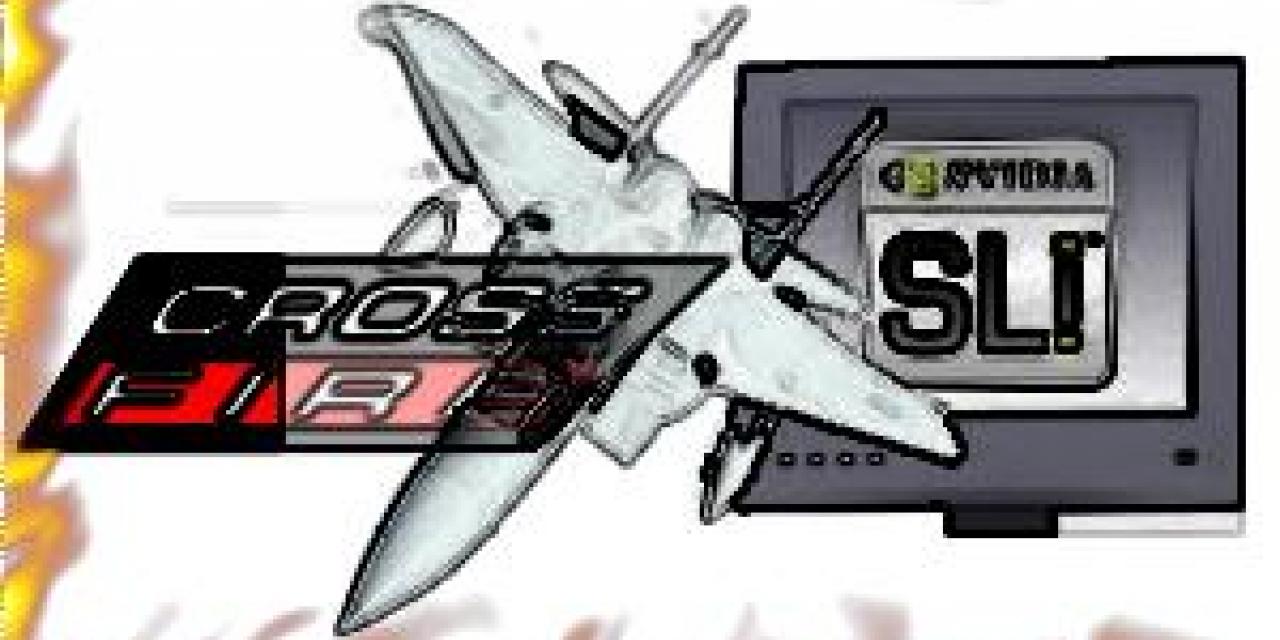
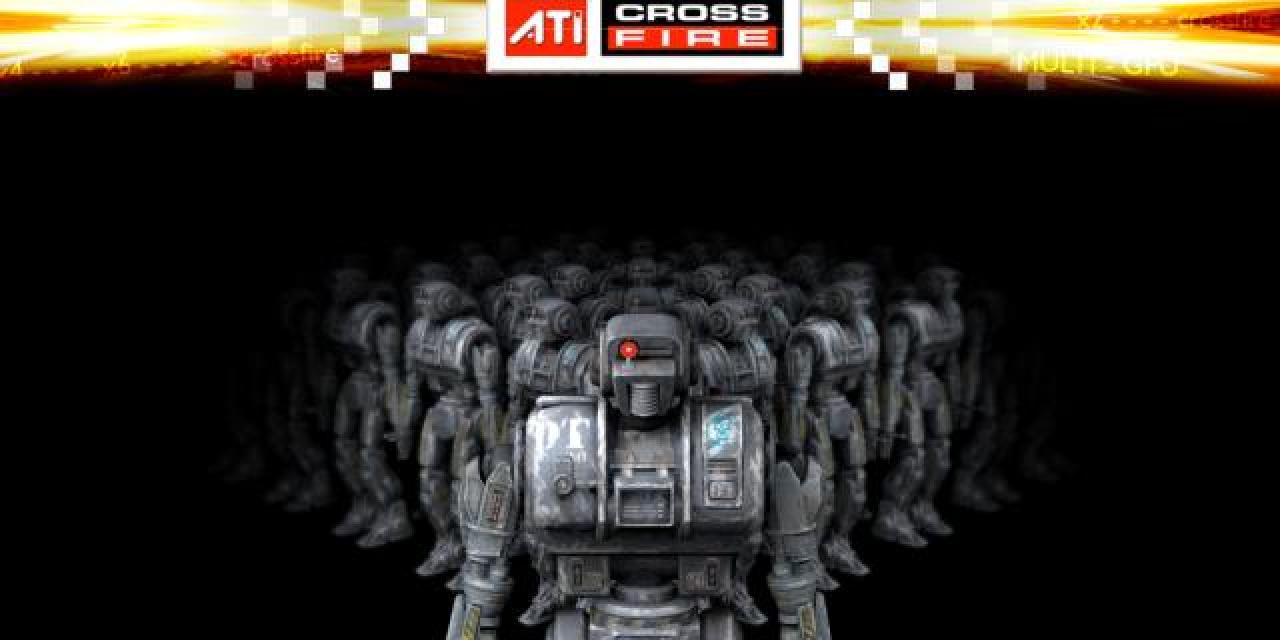
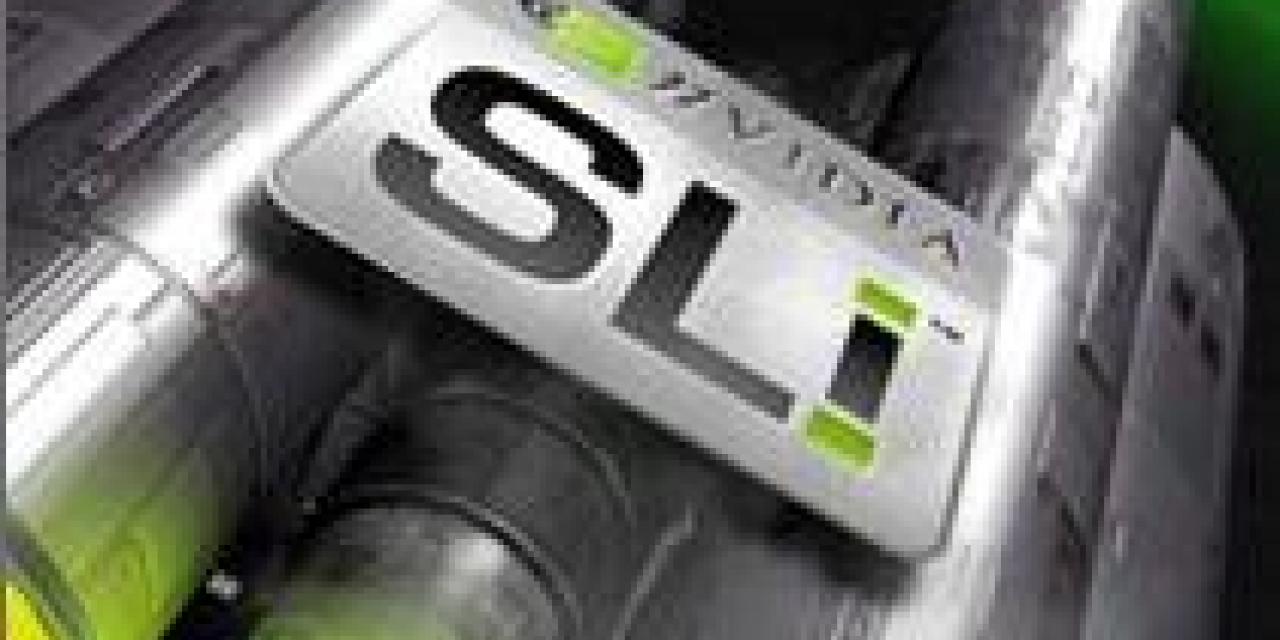
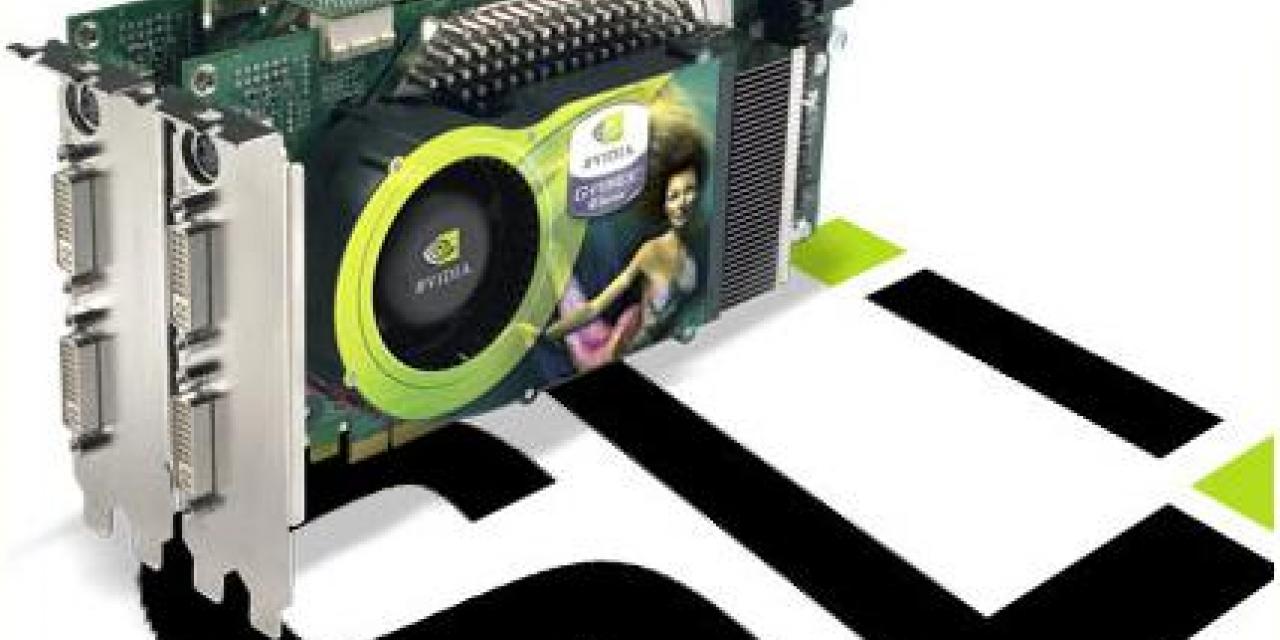
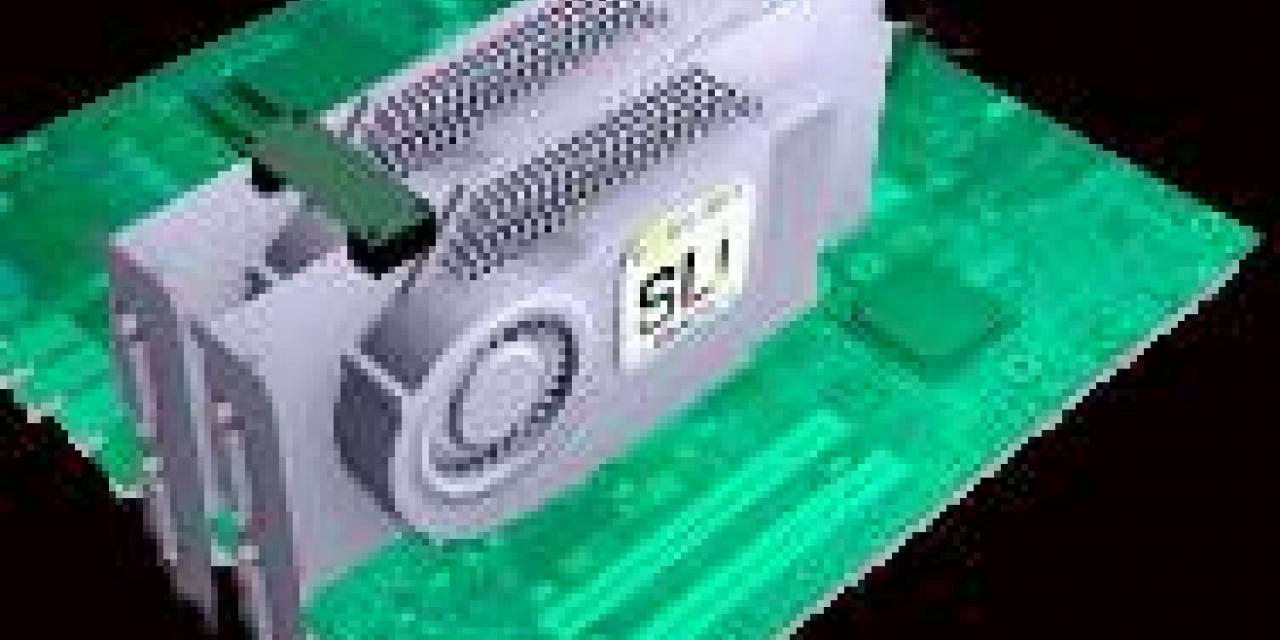
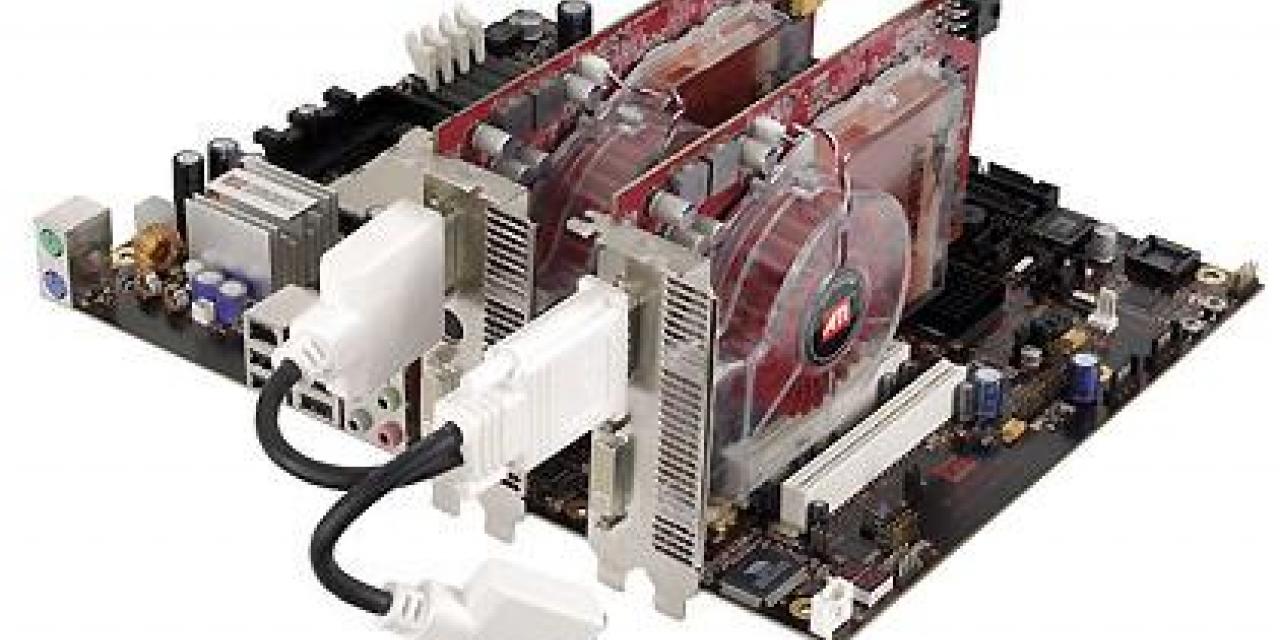

Depending on your personal beliefs and on the extent of your love for videogames you may think of PC setups that feature two graphics cards as; an exaggerated misuse of money, a chance for the companies to increase benchmark scores or simply a practical idea for getting the most out of current games.
Whatever your personal thoughts however, these setups are now available from both major graphics cards manufacturers and they are here to stay. So whether your income puts you in the 1 per cent of this world's population that can afford a twin card setup or if you just marvel at the power wielded by these systems, you will want to know how the ATI Crossfire (+Fire) and nVidia SLI compare.
SLI started life as an abbreviation for Scan Line Interleave as 3DFx boffins got together in 1998 in order to harness the power of two Voodoo 2 boards and deliver the unheard of quality of 1024x768 gaming. The 3DFx design called for a 2D card, in addition to the two Voodoo 2 boards, that would take care of non-3D applications. The firepower came from the 3D cards since one rendered the odd lines of the scene and the other the even ones. Although a lot of time, money and effort went into that design, the concept never made it out of the 3DFx labs and was placed into stasis until the rest of PC technology could catch up.
Six years later and as the arrival of PCI Express meant that the bandwidth available to a video card could now accommodate incoming data from more than one board, nVidia decided to revive the plan, updated for 2004 and beyond. This time SLI means Scalable Link Interface but the concept remains very similar. SLI harnesses the power of two graphics cards on one system in an attempt to increase graphical processing capabilities and ultimately deliver extremely high-end gaming.
ATI did not have the background knowledge that rival nVidia had access to but in some ways that liberated the company from a few restrictions evident in the SLI setup. ATI also had the benefit of witnessing SLIs rising star, a turn of events which made the creation of a two card system a sound investment. Finally ATI decided to address the shortcomings it thought were evident in the SLI product.
So you get ready to spend a shedload of cash to get your hands on a setup that promises two graphics cards instead of one, you accept that you will be paying more than double for the privilege, what should you know before you dive-in?
The most important fact that you should be aware of is that both companies have messed up…
The benefits of being schooled in the most advanced country in the world are clearly evident when considering our expectations of a graphics setup with two cards. One finger is raised only to be followed by a shy yet determined second, clearly indicating that we should get twice the power with two cards. Common sense however, rarely prevails and that is also the case in this instance. Both SLI and +Fire promise the potential for a 100 per cent increase in performance but due to a variety of restrictions it is unlikely that either will be able to deliver on that potential.
One other limitation of both setups, one which could be considered a hidden cost as well, is the need for a high-end processor. The fact that you will have two high-end cards delivering vast amounts of data, through PCIe, to your processor means that your CPU had better be able to handle the onslaught. The innocent victim of an inadequate processor will be your frame rate which will suffer. It is however, unlikely that someone investing on a twin card system will go for anything but an adequate CPU.
So now that we know the basics let us consider the things you have to know before buying a dual graphic card setup.
Flexibility
Motherboards
Since nVidia and ATI have both invested heavily on creating a dual graphic card system (or so they'd have us believe), they will want to begin making profit as soon as possible. To that end both companies require you to purchase motherboards that are compatible with their system in order to setup SLI and +Fire.
nVidia's SLI requires a motherboard with two x16 PCI Express slots that runs nForce 4 or an SLI compatible chipset.
ATIs +Fire also requires motherboards too have two x16 PCI Express slots but the company claims that the boards will need to be running the Radeon Xpress 200 CrossFire chipset.
Graphics Cards
nVidia's SLI will only work if both cards used are the same model and SLI compatible; this means that you will either need two GeForce 6800 Ultras, two GeForce 6800 GTs or two GeForce 6800s. The current SLI range of board covers all cards from 6600 to 7800. This limitation however, does not extend to the manufacturer so even cards made by different manufacturers should work fine together as long as they are the same model. nVidia does recommend though that the cards originate from the same manufacturer.
ATI is more flexible as far as graphics cards are concerned, with +Fire supporting the use of different cards, provided that one of them is the crossfire model and will act as the master card. This means that an X850 can be combined with an X800 even though they may feature a different number of pipelines, different clock speeds etc. The one drawback however is that the slowest card will set the pace as the master card will recognize the slave card's specs and downshift as required.
The main difference between nVidia's SLI and ATIs +Fire is one of philosophy. Both systems attempt to bring a staggering performance improvement but both companies have gone about achieving their goal in a very different way.
nVidia
nVidia's approach to a dual graphic card system is fairly straightforward, assign 50 per cent of the image to each board and then combine the data. One card is responsible for the top half of the image while the other takes care of the bottom half. The two products are combined by a simple u-shaped bridge-connector that links the two cards. This system is very similar to the way Alienware chose to implement its own dual graphics cards system. The difference however, lies in the dynamic way in which nVidia's SLI handles the work load for each card. In nVidia's case the work load doesn't have to be 50/50 but can be re-assigned as the need arises. So if the top half of the scene requires more processing power than the bottom half, each card will still get half of the work, even if that means splitting the scene 70/30.
SLI will also work in an odds and evens way by splitting scenes into odd and even frames and assigning each category to one of the cards.
ATI
ATIs dual graphics system works on a completely different principle; each +Fire setup has to have a master card, the Crossfire specific model, and a slave card. The two cards are not connected to each other via a bridge connector like in SLI but through a cable. The way the work load is divided by +Fire is more flexible then in nVidia's case. The image can be divided into two halves i.e. top and bottom or in a 3DFx-like odds and evens way, or into quads, the sub-units in which current graphics processors divide the image to be rendered. The final mode is a picture enhancing mode which claims to produce much better picture quality but no real performance gain.
If you have a dual card setup at home but are not sure which one you have, a quick visit to a games store will quickly answer your question as nVidia owners have to look for an SLI symbol on the games they buy if they are to make the most out of their system. nVidia, of course, is well known for its PR so expect more and more games to become SLI branded as time goes by. The question remain however, what happens once you've bought your brand new game (SLI support or not) and you load up?
nVidia
SLI will begin rendering your game after it decides which of the three modes available, it will use.
In Compatibility mode, the setup decides that the current installed drivers do not support the game you bought and decide to use only one of the two cards installed. Although it may seem frustrating, this is currently the most frequently used mode of SLI since few games are supported.
If you were careful while buying your game and selected one currently supported by SLI, then you're in luck as the drivers will recognize the pre-installed profile for your game and will select one of the two available dual-GPU rendering modes.
In Alternate Frame Rendering mode (AFR) one card works on the odd frames and the other computes the even frames of the scene, therefore offering a noticeable increase in performance in the game. Games that support this mode include Half-Life 2.
The other dual processing mode is Split Frame Rendering (SFR) which splits the scene horizontally assigning each half to one of the two cards available. Due to the load balancing feature mentioned earlier this mode tends to be the most efficient one if your processor can handle, with the appropriate haste, the information thrown at it by SLI.
ATI
So what happens with ATI +_Fire and games? Good question, ATI says it supports most games out there and plays up the flexibility of its dual-GPU setup. So, are the Canadians right? The wealth of available rendering modes to the +Fire does mean that the system supports both OpenGL and Direct3D games making it rather appealing to most gamers. So once you load your game +Fire looks at it in order to decide which mode to use. If you tell the setup that you wish to go for increased image quality rather than performance, the system will immediately switch to SuperAA.
In SuperAA mode the two GPUs process the same frame but with different FSAA patterns. The information is fed to the master +Fire card which uses its special chip to combine it and produces an image of higher visual quality.
If you go for a performance increase and the game you will be playing is not using render-to-texture functions, the fastest dual mode is Alternate Frame Rendering (AFR). This mode uses the odds/evens splitting of the frames to be rendered method. This mode is patented by ATI and supports both OGL and D3D games.
Direct3D games and applications also have the rendering option of SuperTiling. No it's not a Groove Armada song but it's still pretty cool as it separates the image into quads, creating a chessboard pattern and assigns a number of quads to each card. This mode allows for good load balancing and is a stable way of increasing performance in all D3D applications. Since both cards have to render the entire scene and only pixel information is split between them, the ultimate performance gain is rather moderate and may not impress those of you who have chosen to spend a great deal of money for the setup.
Another option available for both OGL and D3D applications and games is the Scissor method which splits the screen horizontally, much as in nVidia's SFR mode, assigning each half to one of the two cards. Unlike nVidia's SFR mode, ATIs method supports most games. Again this method produces modest improvements as both cards have to process the entire scene geometry.
While both companies solutions are appealing to any gamer, they are both plagued by a variety of issues which you should be aware of before you start dreaming of owning them.
There is a certain balance achieved by the two competitors as ATI has produced a flexible user friendly option and nVidia a more affordable, if a bit cranky, setup.
The cost of +Fire makes it a distant dream for most gamers as the cost of getting the expensive +Fire compatible card, the motherboard and the slave board as well as an appropriate processor reaches nightmarish proportions. If you are not running a small, oil-rich, country you are advised to wait a while for ATI to begin considering a reduction in its prices, something which will become possible at some point after the summer.
In return for your plentiful cash, ATI offers a dual-GPU system with a variety of rendering modes that supports both OpenGL and Direct3D games and applications.
+Fire flexibility also extends to the cards that can be used with the system which do not have to be identical.
nVidia was first to market with its SLI setup and rightfully claims to be the innovator of dual-GPU systems, especially since Alienware's attempt remains as more of a curiosity than a popular option. SLI remains the cheaper option available to gamers and has the potential to produce significant performance increases.
The real problem with SLI is the lack of support for games. Current lists mention approximately 90 supported games although some of the listed titles seem to be yet unreleased titles. The list of supported games however, is clearly inadequate considering the level of investment that the purchase of an SLI rig represents. The history behind nVidia suggests that the company will soon address our concerns but for the time being that remains a wish rather than reality. SLI owners still have to wait for driver updates in order to find out if the manufacturer has added game profiles for SLI.
So our advice as things stand is take a deep breath, count to 10 and sit tight, it will soon be easier and cheaper to get your hands on the setup of your dreams.




